Technology

Uber has agreed to pay a $4.4 million fine to settle a 2017 charge from the U.S. Equal Employment Opportunity Commission pertaining to sex discrimination and retaliation.
The investigation found reasonable cause to believe that Uber &permitted a culture of sexual harassment and retaliation against individuals who complained about such harassment,& the EEOC wrote in a press release today. The EEOC launched the investigation following reports pertaining to Uberworkplace while under the leadership of then CEO Travis Kalanick.
&We&ve worked hard to ensure that all employees can thrive at Uber by putting fairness and accountability at the heart of who we are and what we do,& Uber Chief Legal Officer Tony West said in a statement. &I am extremely pleased that we were able to work jointly with the EEOC in continuing to strengthen these efforts.&
As part of the settlement, Uber will divvy up the $4.4 million to anyone who the EEOC determines experienced sexual harassment and/or retaliation at Uber after January 1, 2014. Uber also agreed to establish a system to identify employees who have been the subject of more than one harassment complaint, as well as identify managers who have not responded to sexual harassment concerns in a timely manner.
For the next three years, Uber will also face monitoring by former EEOC Commissioner Fred Alvarez.
&This agreement holds Uber accountable, and, going forward, positions the company to innovate and transform the tech industry by modeling effective measures against sexual harassment and retaliation,& EEOC Commissioner Victoria Lipnic said in a statement.
Now, a claims administrator will send notices to every female employee who worked at Uber at any point between January 1, 2014 and June 30, 2019. If thatyou, you&ll be able to respond to that notice to make your claim. The EEOC will then determine who is eligible for monetary relief.
- Details
- Category: Technology
Read more: Uber agrees to pay $4.4 million to settle EEOC sexual harassment and retaliation charge
Write comment (92 Comments)Welcome to TechCrunch2019 Holiday Gift Guide! Need help with gift ideas? We&re here to help! We&ll be rolling out gift guides from now through the end of December.You can find our other guides right here.
When it comes to smart home stuff, once you start, ithard to stop. As soon as you&ve got one light that you can turn on and off from your phone, you&ll want five.
As such, smart home gear can make great gifts for anyone whoalready started making their way down that rabbit hole.
Alas, therea lotof bad smart home hardware out there — mystery devices from brands no one has heard of, with apps that hardly work out of the box and will probably just silently stop working altogether the next time therea big iOS or Android update.
Looking to help someone make their already smart home a little smarter? Heresome of the stuff we liked this year:
This article contains links to affiliate partners where available. When you buy through these links, TechCrunch may earn an affiliate commission.
TP-Link Kasa Plug
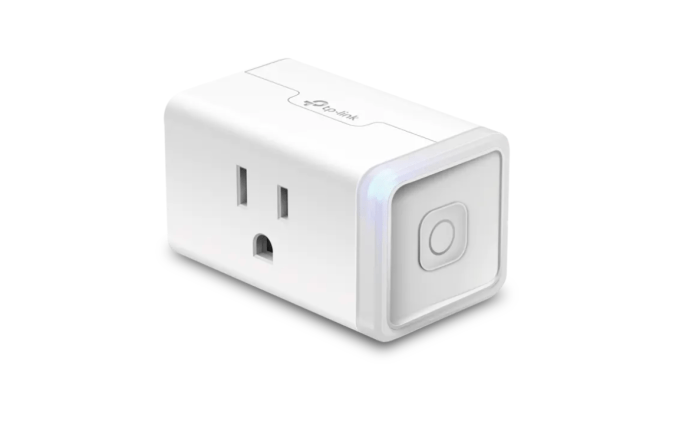
Smart plugs are a great way to introduce a person to the connected home. The TP-Link Kasa plugs are inexpensive but work with every popular voice assistant and smart phone. Smart plugs let you turn a basic lamp or coffee maker into a smart device without replacing anything.
Price: $28 for a two-pack on Amazon
Wyze Cam Pan

The Wyze Cam Pan packs a lot of features for the price. At $35, the small 1080p camera pans, tilts and zooms, and sports a low-light mode. Best of all, the Wyze cam works with Amazon Alexa and Google Assistant for things like &Alexa, show me a view of the living room on my office TV.& Itby far the best smart home camera for the price.
(If you don&t need it to tilt/pan/etc. on command, therealso a $25 version without all that.)
Price: $35 on Amazon
Echo Dot with Clock
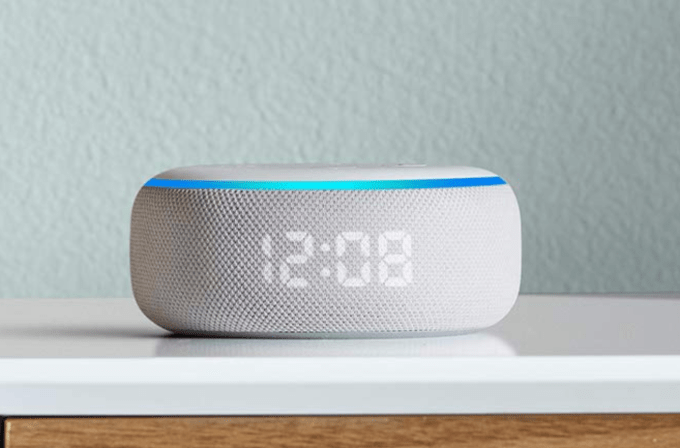
The Echo Dot with Clock is part of the Amazon Alexa family. Itslightly more expensive than the ubiquitous Echo Dot… but it has a built-in clock! The clock makes this thing way more useful when you&re not actually talking to it — and, fortunately, unlike the Echo Spot, thereno built-in camera to make it extra weird to put on your bedside table. One catch: these keep going in and out of stock, so they might be a pain to get this late in the game.
Price: $35 on Amazon
Nanoleaf Canvas

The Nanoleaf Canvas is a new type of wall art. Itan interactive, fun way to splash a wall with light and design. The panels snap together, allowing the owner to create and recreate designs to fit their life and space.
Price: $180 for a starter kit of 9 tiles
Ember
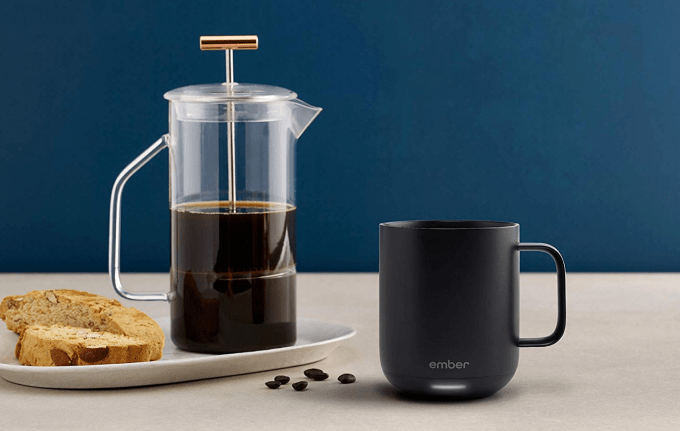
The Ember is a smart coffee mug. No, really. The Ember uses an internal heater to keep the drink at an ideal temperature as set by the user via a companion app. If the coffee drinker in your life is more of an all-day coffee sipper, the Ember should bring joy to their life.
Price: $100 on Amazon
Dewplanter
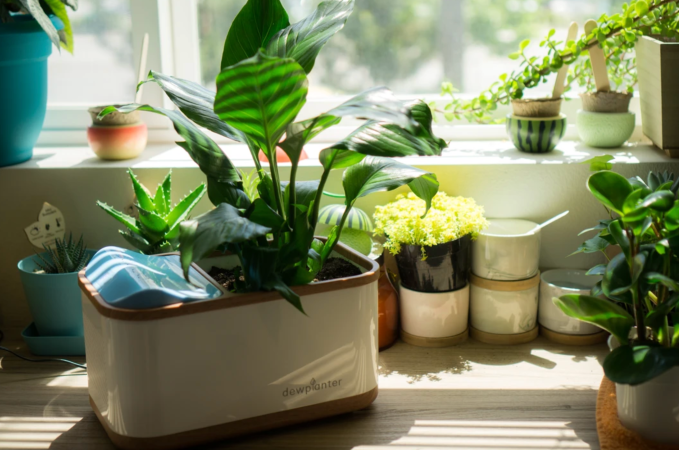
Some people love plants but hate watering. Thatwhere the Dewplanter comes in by capturing and filtering water in the air. It works as a dehumidifier — but instead of dumping excess water into a bin, it waters a plant. A control panel allows the owner to set the desired water amount. Set it and forget it and get a green thumb without any skill. Low-maintenance plants like evergreens, ferns, violets and aloe plants work best.
Price: $50
Furbo

It&d be nice if we could all be home with our dogs 100% of the time — but for most people, thatjust not the case. Furbo is part web cam and part treat dispenser. Using a smartphone app, dog owners can monitor and interact with their pets, remotely tossing out treats when your pup does something good. Dog-friendly color signals and sounds are designed to get attention, while real-time updates and a camera let owners gain insight in their petlife from afar. Need to know when Mr. Boots starts barking so the neighbors don&t complain? Furbo can listen for barking and send you notifications accordingly.
Price: $134
iGrill
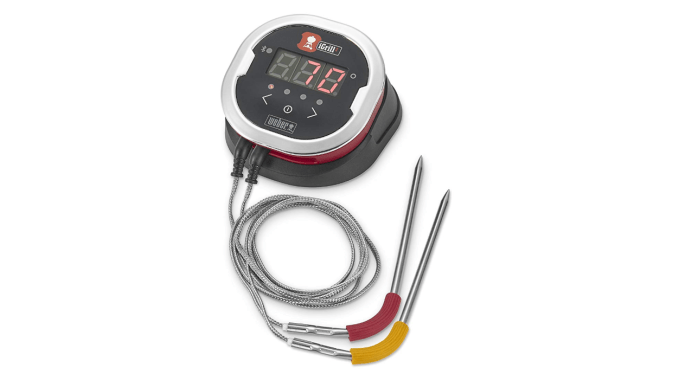
The Weber iGrill is a fantastic thermometer designed for grilling. Wireless connectivity brings the grill into the modern era, allowing the user to check the meattemperature from a smartphone and without opening the grill. A magnetic base sticks the control unit to the side of the grill and the probes are designed to withstand searing heat.
The iGrill Mini is around $50 and includes Bluetooth connectivity. The slightly more expensive iGrill 2 adds a LED display to the base unit and an extra probe, while the priciest model, iGrill 3, has more battery life and the extra probe but is only designed to be permanently mounted directly on the side of specific Weber grills.
Price:iGrill Mini, $45 on Amazon | iGrill 2, $65 on Amazon | iGrill 3, $80 on Amazon
Casper Glow Light

The Casper Glow Light makes going to bed and waking up a bit easier. The light is warm, and gradually dims to assist in falling asleep. Likewise, therean alarm function that slowly turns on to help knock the sleeper out of a deep slumber. The $129 Casper stands apart from other light-alarm clocks in several ways. One, it works as a lantern, allowing the owner to carry it throughout the home, and recharges using a bed-side dock. The Glow Lightdesign is simple and durable; it can likely survive a fall off a table. Most importantly, the clock is managed with a smartphone app, eliminating the need to use clunky, on-device controls.
Price: $129
Sonos Move
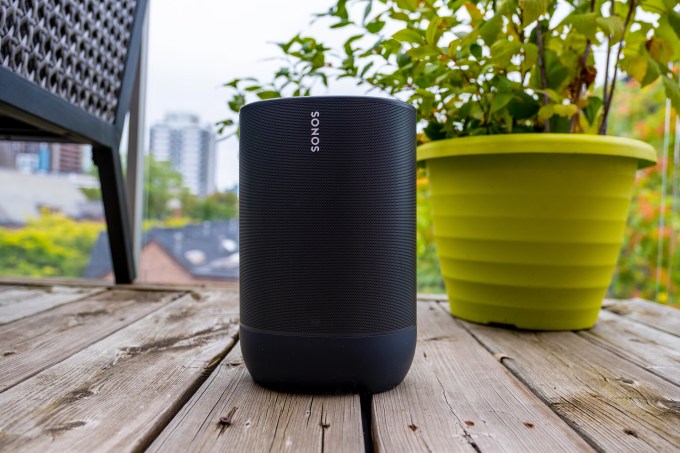
For the Sonos lover in your life, the Move speaker fills a massive hole that existed in Sonos& lineup for far too long: portable speakers. The Move brings all of Sonos& features to a speaker designed to move around the ownerhouse. And it sounds great, too, with full, expansive sound able to fill any room. At $399 the Move is more expensive than competitors, but for someone who has already embraced the Sonos concept, the connectivity and ecosystem is worth the price of admission.
Price: $399 on Amazon
- Details
- Category: Technology
Read more: Gift Guide: 10 gadgets for a smarter smart home
Write comment (100 Comments)
Blaming the &volatile state of the global mobility landscape& and rising infrastructure costs, Share Now, the car sharing service owned by Daimler and BMW, has announced that it is pulling out of North America as of February 29, 2020.
On the same date — citing &low adoption rates& — Share Now will also cease operating in three European cities: Florence, London and Brussels. Instead, the focus will switch to remaining European cities where it operates and where it thinks the service remains viable.
In North America, Share Now (formerly car2go) operated in Montreal, New York, Seattle, Washington, D.C. and Vancouver.
&This decision was made based on two extremely complicated realities,& says Share Now. &The first being the volatile state of the global mobility landscape, and the second being the rising infrastructure complexities facing North American transportation today and the associated costs needed to sustain operations here.&
The Daimler AG and The BMW Group joint entity says it had remained hopeful that it would be able to come to a solution over the last few months, but that ultimately it was not in a position &to commit to the level of investment necessary& to make the North American market successful &both in the near and long term.&
An email sent to London customers of DriveNow — the name for Share Now in the U.K. capital city — echoes a similar sentiment, with the company saying &the decision was not made lightly.& It says the number of customers in London and demand for its car sharing service was below expectations and lower than other Share Now cities. The company also blames local factors, citing the high costs of operation and the different circumstances in the individual London boroughs:
We started in London in December 2014 with the vision to change urban mobility and offer a flexible and attractive mobility solution which is in combination with public transport and is an alternative to the private car.
Although more and more Londoners integrated our service in their daily mobility behaviour we had to face the hard reality that we could still not convince enough people to do so. To make our car sharing service successful in a city strongly depends on the respective market circumstances.
The number of customers in London and their demand for our car sharing service was below our expectations and lower than in other SHARE NOW cities. Furthermore, we had to face local factors, like the high costs of operation and the different circumstances in the individual boroughs.
We are saddened by this decision and deeply apologize for the inconvenience that this will cause you when service ends. We especially want to thank you for using our service in the last years and for your loyalty.
- Details
- Category: Technology

Amazon is ramping operations for its Kuiper project, its forthcoming high-speed satellite internet product, with a new HQ and R-D facility. From a small satellite constellation operating in low Earth orbit, Kuiper will provide internet connectivity to underserved communities — and in some cases, to people without any access at all.
If that tune sounds familiar, itbecause ita common enough goal these days — SpaceX is already launching satellites that will make up its Starlink constellation to provide similar service, first in North America and then eventually globally. OneWeb is launching satellites to provide global coverage, and is hoping to get started deploying its constellation in January. Google (or rather Alphabet, but they&re looking more like the same company than ever before these days) is looking to provide similar connectivity services in hard to reach areas through its Loon high-atmosphere balloon project, too.
Amazonapproach involves launching thousands of satellites to low Earth orbit, over the course of multiple launches spanning multiple years. Using multiple, smaller satellites instead of large, single or small volume geostationary satellites (as has been the primary approach for satellite internet in the past) means you can potentially offer better service, with wider reach, and at a lower ultimate cost.
Kuiper doesn&t yet have a timeline around deployment or availability for customers, but Amazon is clearly investing in the project with this new dedicated facility, which will be located in Redmond, Wash., near Amazonoverall home base in Seattle. All told, the new facility will cover 219,000 square feet across two separate buildings, and it&ll house R-D labs, office space and even prototype manufacturing for onsite satellite hardware production. Amazon anticipates Kuiper team members will start moving into the new site sometime next year.
- Details
- Category: Technology
Read more: Amazon will establish a new headquarters for its Kuiper satellite broadband project
Write comment (100 Comments)Whatthe most successful pure SaaS company of all time? The answer is Salesforce, and itno contest — the company closed the year on an $18 billion run rate, placing it in a category no other company born in the cloud can touch.
That Salesforce is on such an impressive run rate might suggest that reaching a billion in revenue is a fairly easy proposition for an enterprise SaaS company, but firms in this category grow or drive revenue like Salesforce. Some, in fact, find themselves growing much more slowly than anyone thought, but keep slugging it out as they inch steadily toward the $1 billion mark. This happens to public and private SaaS companies alike, which means that we can look at few public ones thanks to their regular earnings disclosures.
Ita good time to look back at the year and analyze a few firms that should reach the mythical $1 billion in revenue at some point. Today we&re examining Zuora, a SaaS player focused on building and managing subscription-based services. GuideWire, a company transitioning to SaaS with big ambitions and Box, a well-known SaaS player caught somewhere between big and a billion.
Zuora: betting on SaaS
We&ll start with the smallest company that caught our eye, Zuora . We&ll proceed from here going up in revenue terms.
Zuora is as pure a SaaS company as you can imagine. The San Mateo-based company raised nearly a quarter billion dollars while private to build out the technology that other companies use to help build their own subscription-based businesses. To some degree, Zuorasuccess can be viewed as a proxy for SaaS as a whole.
However, while SaaS has chugged along admirably, Zuora has seen its share price fall by more than half in recent quarters.
At issue is the firmslowing growth:
- In the quarter detailed on March 21, 2019, Zuorasubscription revenue growth slowed to 35% compared to the prior year period. Total revenue growth grew an even slower at 29%.
- In the quarter announced on May 30, 2019, Zuorasubscription revenue grew 32% while its total revenue expanded 22%.
- Moving forward in time, the companyquarter reported on August 28, 2019 saw subscription revenue growth of 24% and total revenue growth of 21% compared to the year-ago quarter.
- Finally, in its most recent quarterly report earlier this month, Zuora reported marginally better 25% subscription revenue growth, but slower total revenue growth of 17%.
Why is Zuoragrowth slowing? Thereno single reason to point out. Reading through coverage of the firmearnings report reveals a number of issues that the company has dealt with this year, including slow sales rep rampand some technology complaints. Add in Stripemeteoric rise (the unicorn added tools for subscription billing in 2018, expanding the product to Europe earlier this year) and you can see why Zuora has had a tough year.
Adding to its difficulties, the company has lost more money while its growth has slowed. Zuoranet loss expanded from $53.6 million in the three calendar quarters of 2018. That rose to $59.9 million over the same period in 2019. But the news is not all bad.
In spite of these numbers, Zuora is still growing; the company expects around $276 to $278 million in revenue in its current fiscal year and between $206 and $207 million in subscription top-line revenue over the same period.
At the revenue growth pace set in its most recent quarter (17% in the third quarter of its fiscal 2020) the company is eight years from reaching $1 billion in revenue. However, Zuorarising subscription growth rate in the same period is very encouraging. And, the companycash burn is declining. Indeed, in the most recent quarter Zuoraoperations generated cash. That improvement led to the firmfree cash flow improving by half in the first three calendar quarters of 2019.
It also has pedigree on its side. Founder and CEO Tien Tzuo was employee number 11 at Salesforce when the company launched in 1999. He left the company in 2007 to start Zuora after realizing that traditional accounting methods designed to account for selling a widget wouldn&t work in the subscription world.
Zuorasubscription revenue is high-margin, but the rest of its revenue (services, mostly) is not. So, with less thirst for cash and modestly improving subscription revenue growth, Zuora is still on the path towards the next revenue threshold despite a rough past year.
Guidewire: going SaaS the hard way
- Details
- Category: Technology
Read more: Three SaaS companies we think will make it to $1B in revenue
Write comment (94 Comments)Nature is a good source of inspiration for roboticists, but itrare that natureelegance and genius can be replicated in any real way. Still, we&re getting closer. This tiny insect-like robot is made of soft materials and weighs less than a gram, yet can move quickly and with some intelligence — and is robust enough to survive a pounding from a fly swatter.
For the most part, tiny robots like this are compromises. For instance, they can move quickly, but only with external power. Or they can navigate intelligently, but only by being controlled remotely. Or they&re power efficient, but unable to move quickly or intelligently.

The DEAnsect, so called for being made of &dielectric elastomer actuators,& is an attempt to create a robot that combines locomotion, intelligence and efficiency into a single package — even if itonly a little bit of each.
It moves with three little legs, each of which advances ever so slightly when an electric current changes the shape of the elastomer they&re made of, pulling the robot forward a tiny bit. This happens many times per second, too fast for us to see, and giving the impression that the robot is sort of gliding forward at a rate of 0.3 body lengths per second. Thatnot much compared to a cockroach or spider, but itpretty good compared to other self-powered small robots.

The efficiency and sturdiness of these parts is a new record for soft robotics, and the DEAnsect is strong enough to carry around not just a battery but a bit of onboard electronics (amounting to some five times its own 190 milligram weight) that let it operate with some rudimentary logic. For example, by attaching a tiny optical sensor the robot can be made to follow a black line and not stray onto a white surface.
Italso able to withstand a bit of abuse, fittingly in the form of a fly swatter, as you see in the gif at top. Of course, it needs to be scraped off the floor there first, but itvery much to the robotcredit that it can scoot again with no delay afterwards.
Naturally there isn&t much a robot like this can do right now, but ita promising accomplishment nevertheless, showing a number of interesting ways forward in the soft robotics field.
DEAnsect was created by Xiaobin Ji and Matthias Imboden at EPFL Soft Transducers Laboratory and the rest of their team there. The robot is described in a paper published today in the journal Science Robotics.
- Details
- Category: Technology
Read more: This tiny, soft robo-bug scoots with smarts and survives swats
Write comment (99 Comments)Page 93 of 5614

 11
11